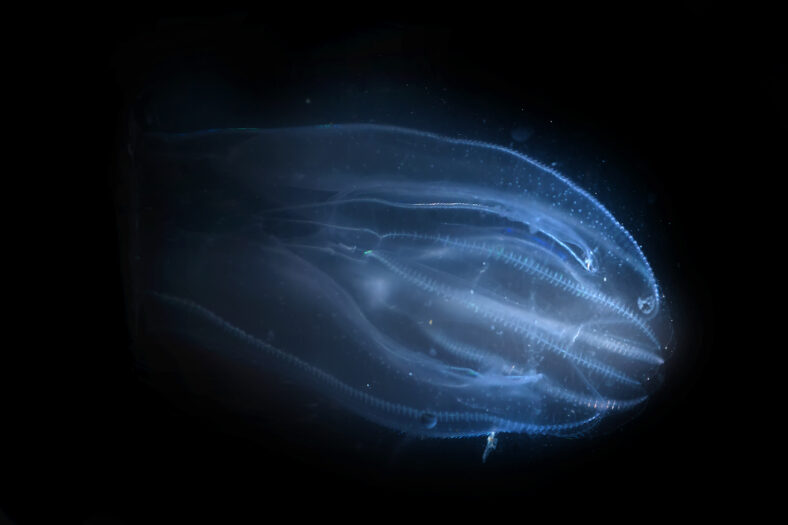Comb Jellies Can Actually Age In Reverse, And Perhaps They Will Teach Us A Thing Or Two About Immortality

Sometimes, when life gets too stressful, you might feel as if you want to turn back the clock and return to simpler times.
While humans may not be able to time travel or transform themselves into teenagers again, one marine creature can actually age in reverse, regressing from its adult body to a juvenile stage.
Previously, the immortal jellyfish (Turritopsis dohrnii) was the only species thought to have the ability for reverse development, but now, scientists know that the comb jelly (Mnemiopsis leidyi) can do it too.
Scientists were already aware that comb jellies were pretty remarkable. They can fuse together to survive major injuries and reproduce during the larval stage.
On top of all that, they are also capable of reverse aging! The new finding suggests that animals with flexible life cycles are more common than previously thought.
“The work challenges our understanding of early animal development and body plans, opening new avenues for the study of life cycle plasticity and rejuvenation,” said Joan J. Soto-Angel, a marine biologist and postdoctoral fellow at the Department of Natural History at the University of Bergen in Norway.
“The fact that we have found a new species that uses this peculiar ‘time-travel machine’ raises fascinating questions about how spread out this capacity is across the animal tree of life.”
While observing animals in the laboratory, Soto-Angel realized that an adult comb jelly had disappeared from a tank. In its place, there was a larva.
So, he set out to determine whether these could be the same individual. Soto-Angel, along with a colleague named Pawel Burkhardt from the Michael Sars Center, designed experiments to try to recreate the potential age reversal.

Sign up for Chip Chick’s newsletter and get stories like this delivered to your inbox.
They kept 65 healthy adult comb jellies in separate tanks and starved them for 15 days. Then, the jellies were fed once a week with a small amount of rotifers. They quickly began to shrink in size.
The researchers also surgically removed the lobes of 15 of these jellies at the start of the experiment, adding yet another stressor.
When the comb jellies were placed under the stress of starvation and physical injury, they demonstrated the power to revert back to the larval stage.
“Witnessing how they slowly transition to a typical cydippid larva as if they were going back in time was simply fascinating,” said Soto-Angel.
“Over several weeks, they not only reshaped their morphological features but also had a completely different feeding behavior, typical of a cydippid larva.”
The study showed that the comb jellies could shift back to a youthful form. Of the 50 starved jellies, only seven fully reverted. Meanwhile, in the group that also had their lobes removed, six of the 15 injured animals aged backward.
Comb jellies will be valuable models for research in developmental biology and aging. They will help pave the way for future discoveries in the animal kingdom.
The study was published in the Proceedings of the National Academy of Sciences.
More About:News





